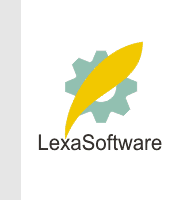Filmscanners mailing list archive (filmscanners@halftone.co.uk)
[Date Prev][Date Next][Thread Prev][Thread Next][Date Index][Thread Index]
Re: filmscanners: Light Source (Nikon LS40 vs. Minolta Scan Elite II)
Sorry I'm a little late with this reply, but this last week was a wipe
out, averaging 2-3 hours of sleep a night while we put a series of
nearly 100 new images into commercial production (a series of
bookmarks). The whole project from selection process (that took 3 days
alone), to scanning, cropping, digitally enhancing, adding captions and
logos, outputting, printing, laminating, cutting and display design was
accomplish in less than a week. I'm paying for that with barely the
energy to type ;-)
Whew!
Nikon's lighting system is unique. They claim no one else uses it
because they own the patent, which I'm sure they do. However, there
might be other reasons it is not being used or licensed.
The lighting source allows for Nikon to use a CCD sensor without any
color filters (monochrome). This probably saves money on that aspect,
although the LED array might be considerably more costly than cold
cathode (fluorescent) lighting. The advantage to the LED light source
might be that they are less likely to burn out, or uneven lighting with
age, but it might eventually dim. Further it might actually allow (in
theory) for sharper imaging, as the light source can be controlled for
exact color, and sensitivity, and the light waves have less scattering.
The CCD is also unencumbered with any filters.
This same benefit might also be problematic, however, on several
grounds. One thing is that this type of lighting tends to accentuate
surface defects like scratches, finger prints, and dust on the film.
Nikon gets around this to some extent using dICE software. That IR
cleaning software does add time to the scan.
This lighting design might also allow for a quicker scan as it can use
all three lines in the tri-line CCD sensor at once to do the scan, but
this might also be the cause of some reported banding problems due to
calibration issues between each sensor light. On some models users have
been forced to use the single scan light mode to prevent banding, but
this also slows the acquire process.
However, this light source has other potential and real problems. For
one thing, should a LED fail, the cost to replace the light source would
be more costly.
The most common complaint about the Nikon scanners (other than buggy
software) is that the depth of field is limited by the low brightness of
the LED lighting source. This might cause even minimally bowed images
(slides or negs) to become out of focus around the edges. Some suggest
that mounting images in glass slide mounts might resolve the problem,
but that introduces others, like another 4 surfaces to keep clean of
dirt and scratches, and removing images from their original mounts.
So, the choice is yours. There are obviously reasons for both systems.
Art
Friedrich Bloeser wrote:
> Until recently I had planned to purchase the Nikon LS40 Coolscan IV
> filmscanner. But now that I had learned of the brand-new Minolta
> Dimage Scan Elite II, I have to think this decision all over.
>
> There are a few features in favor of the Minolta:
> - color depth 48bit vs. 36bit (I don't know if this is relevant for
> an amateur),
> - multi-pass scanning (Nikon only with VueScan),
> - batch-scanning of four mounted slides.
>
> While every manufacturer except Nikon seems to use a fluorescent
> lamp as light source, the Nikon scanner comes with a RGB LED array.
> Does one type of light source have advantages over the other?
>
> Thanks,
> -fritz
>
> .
>
>
|

